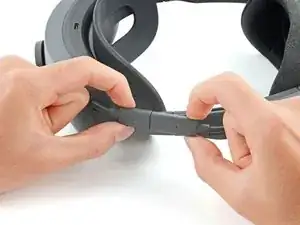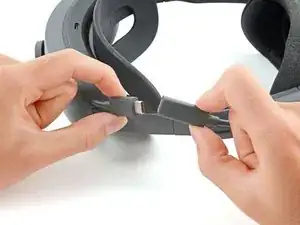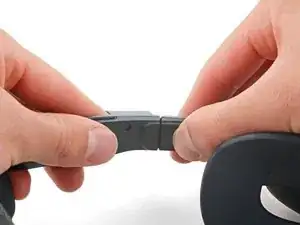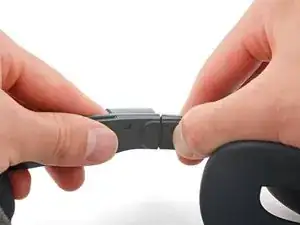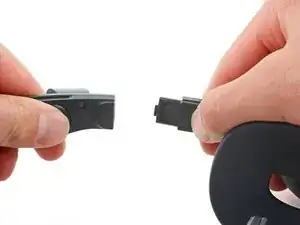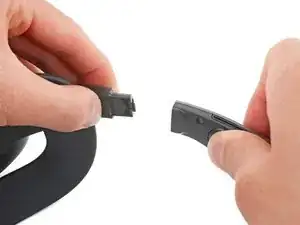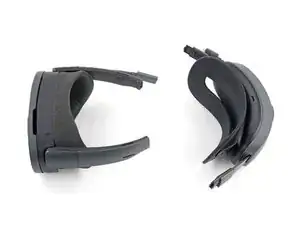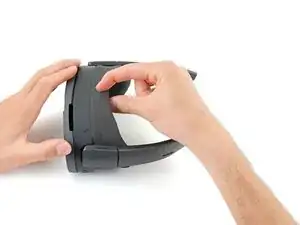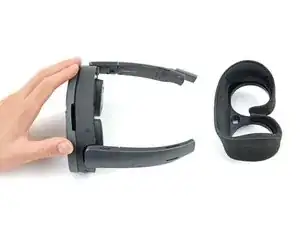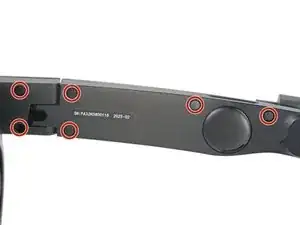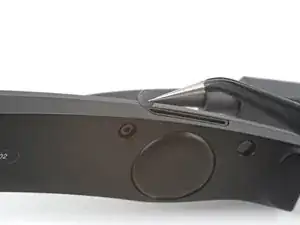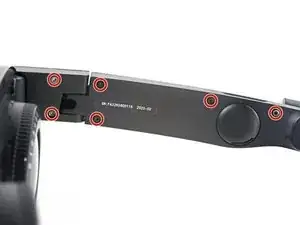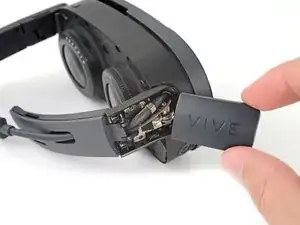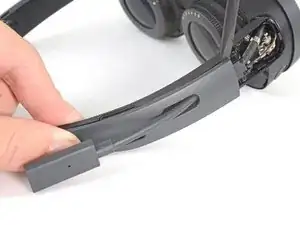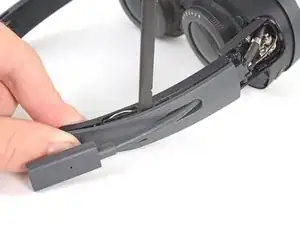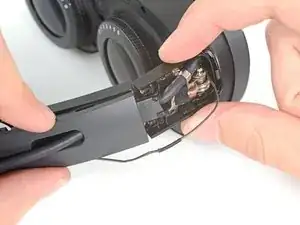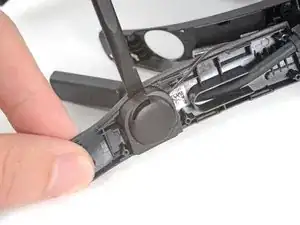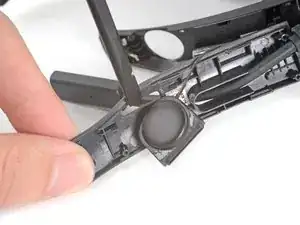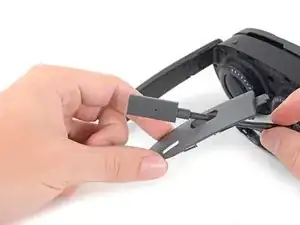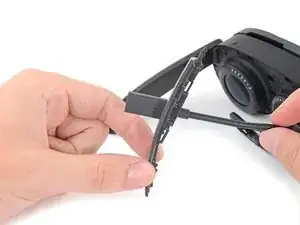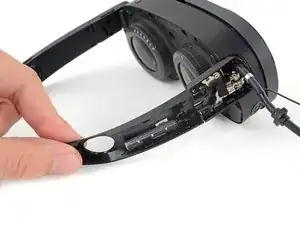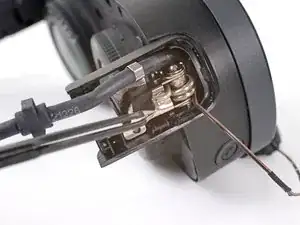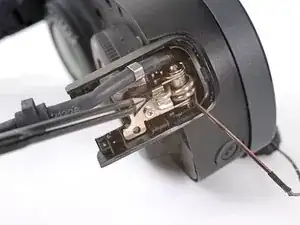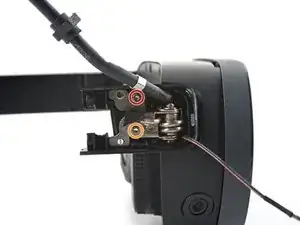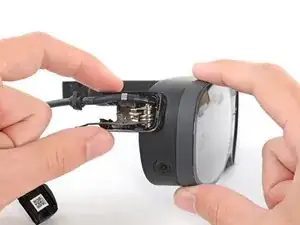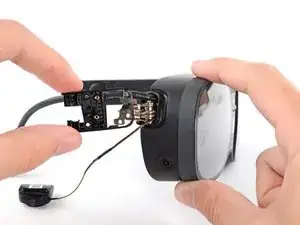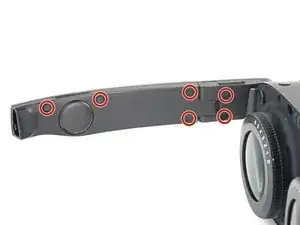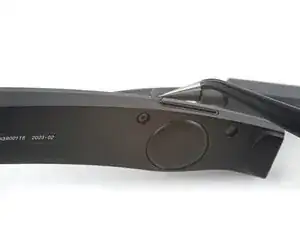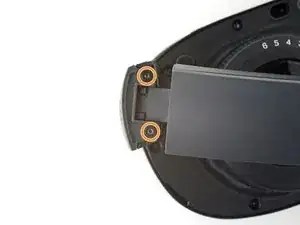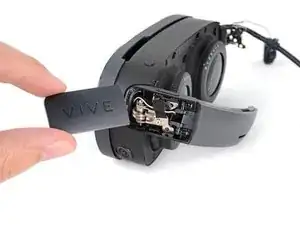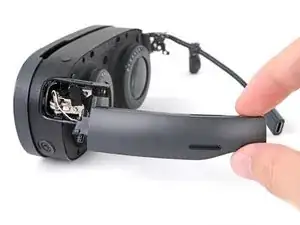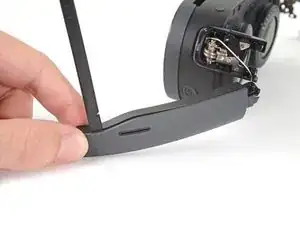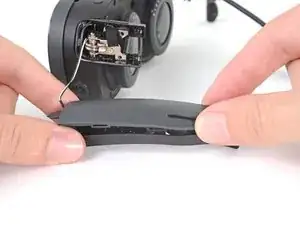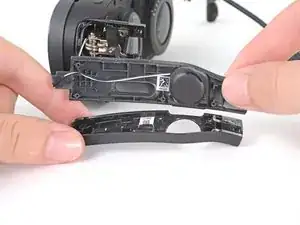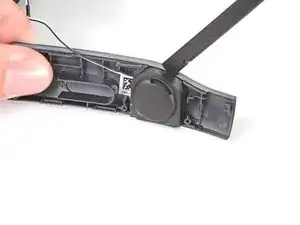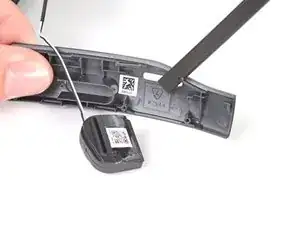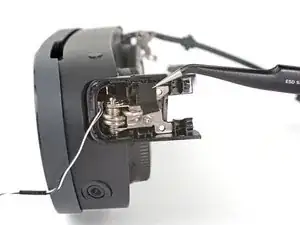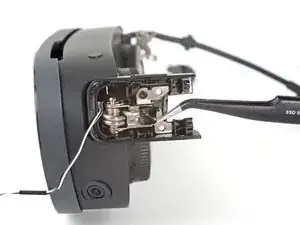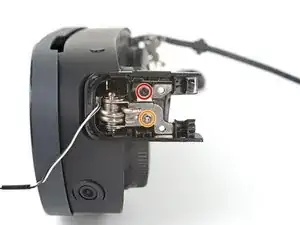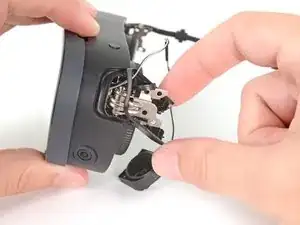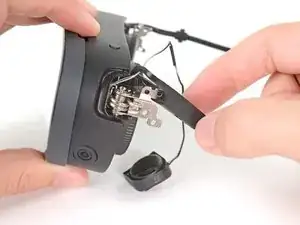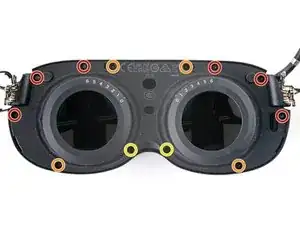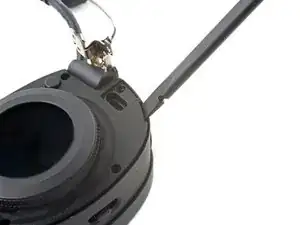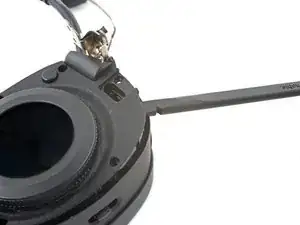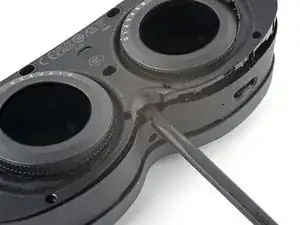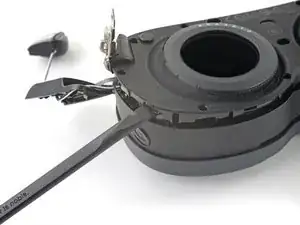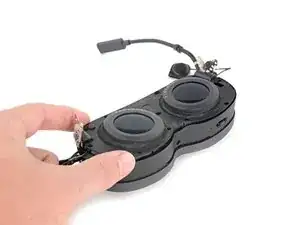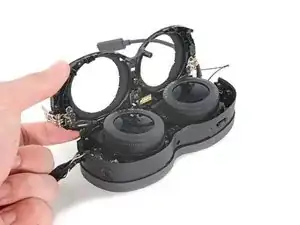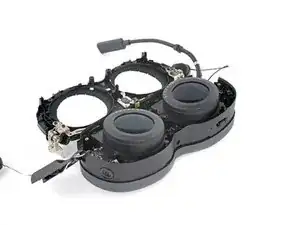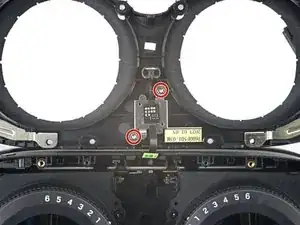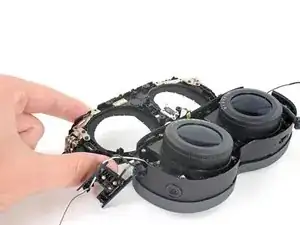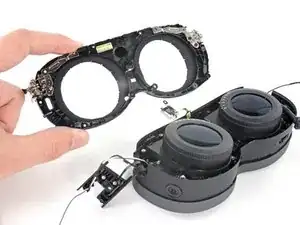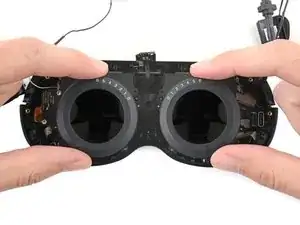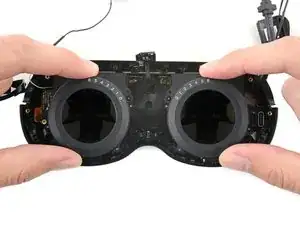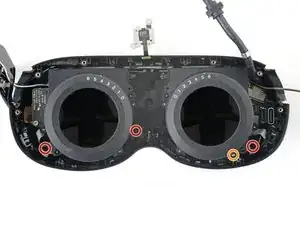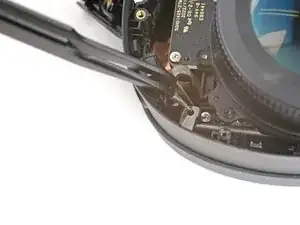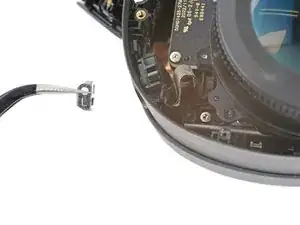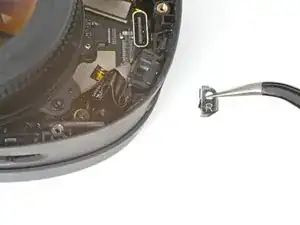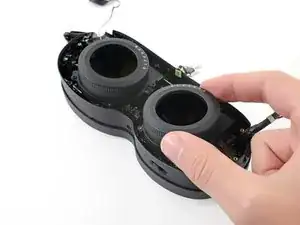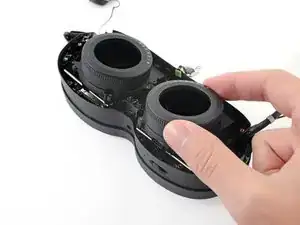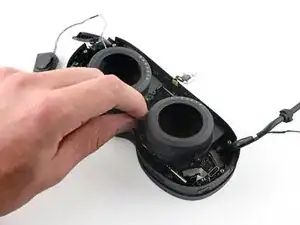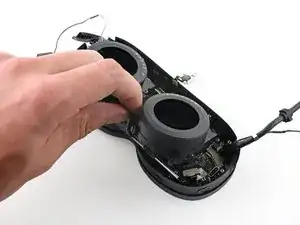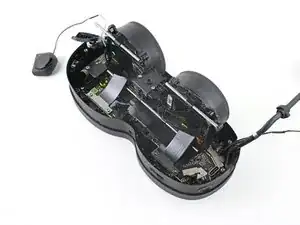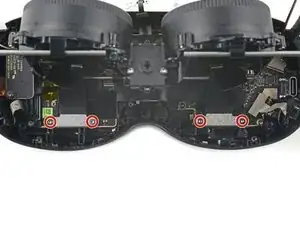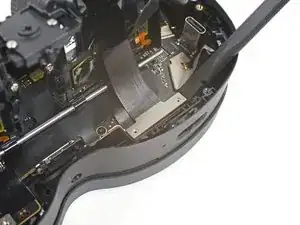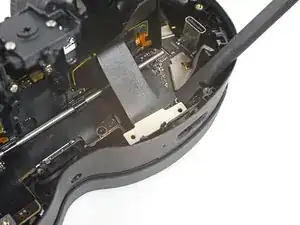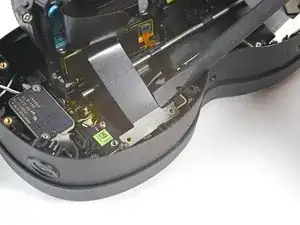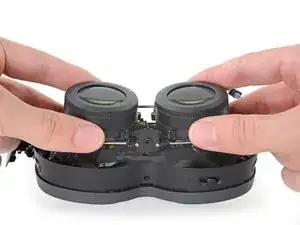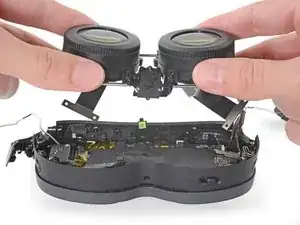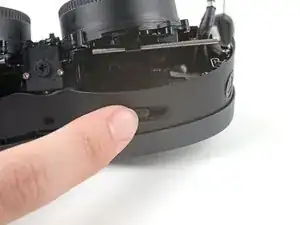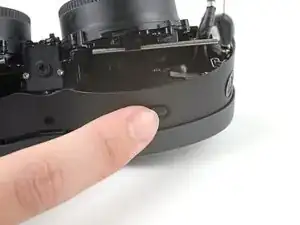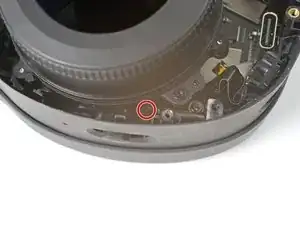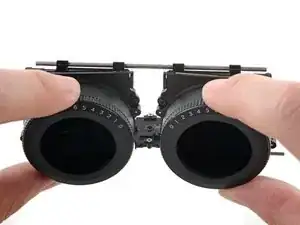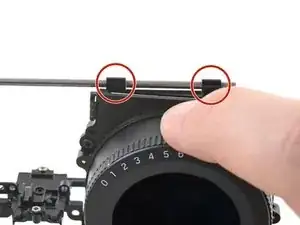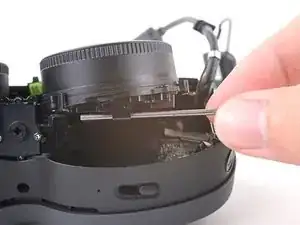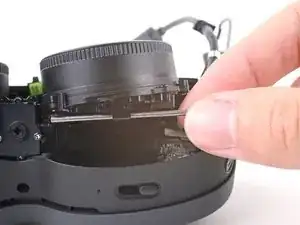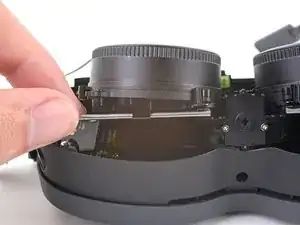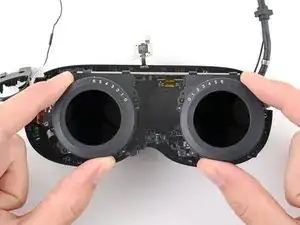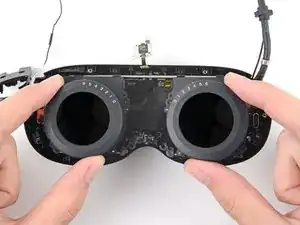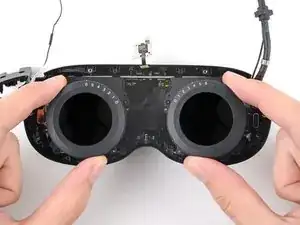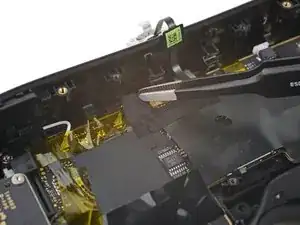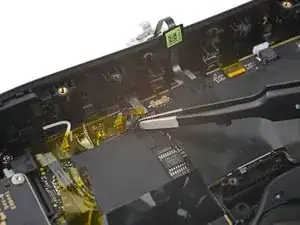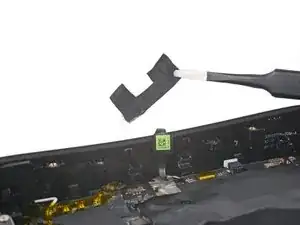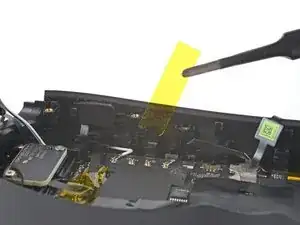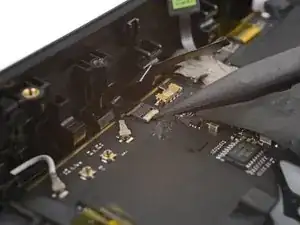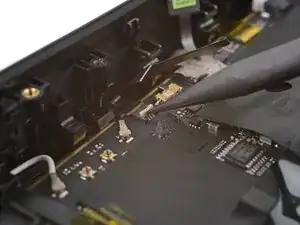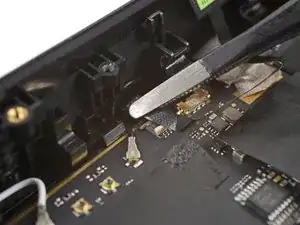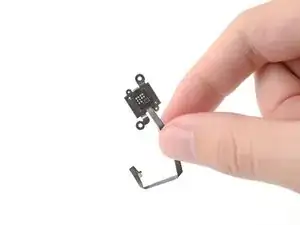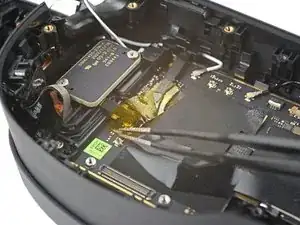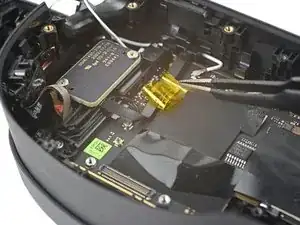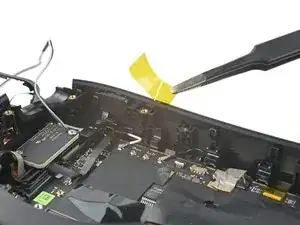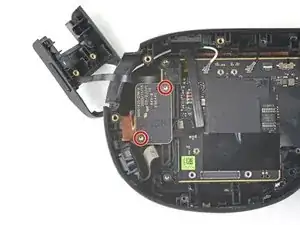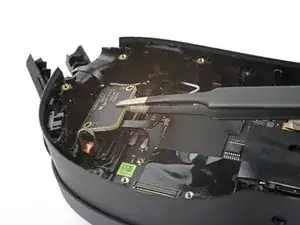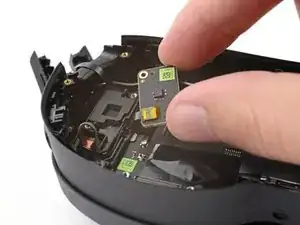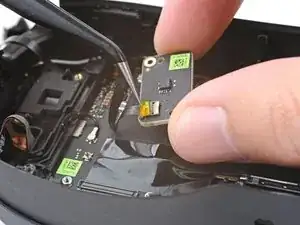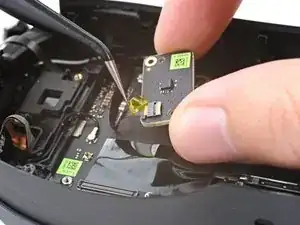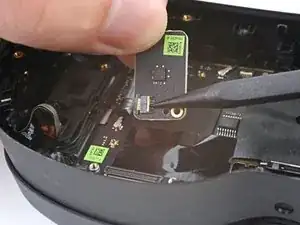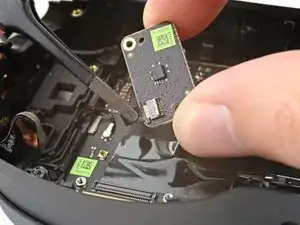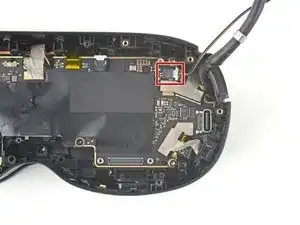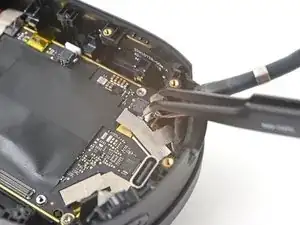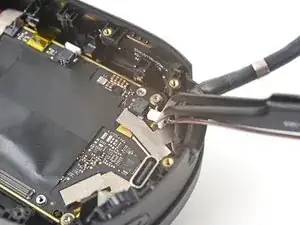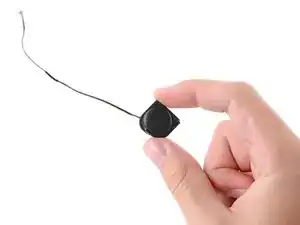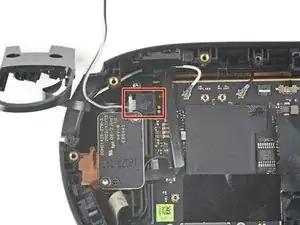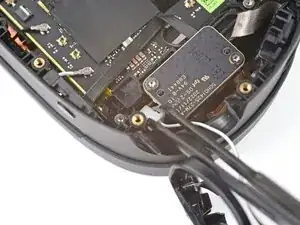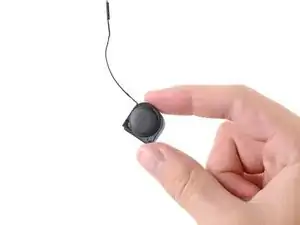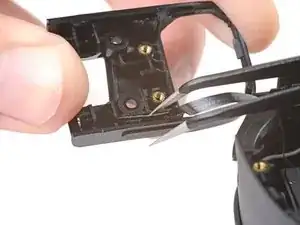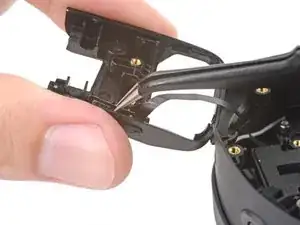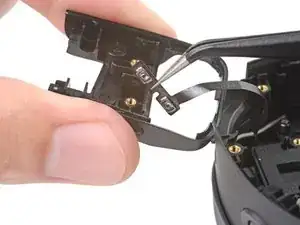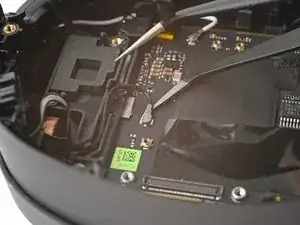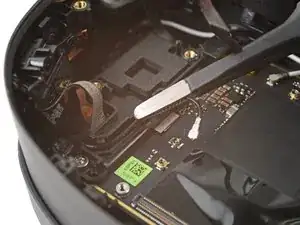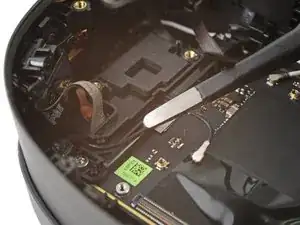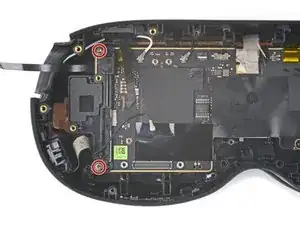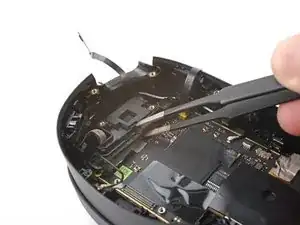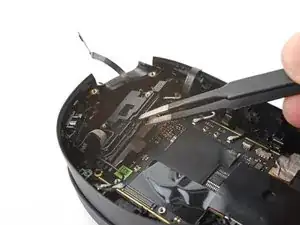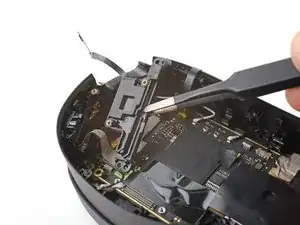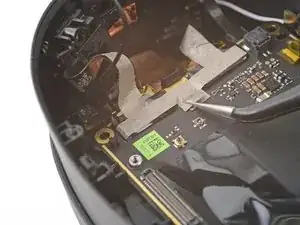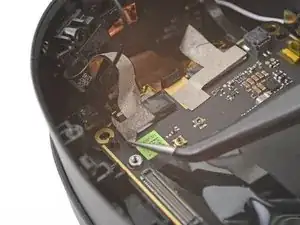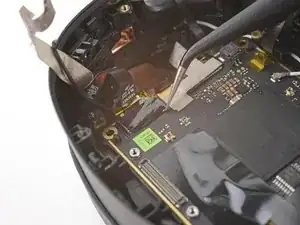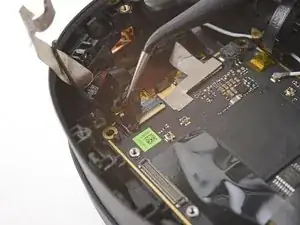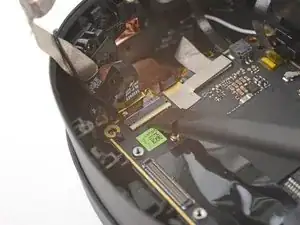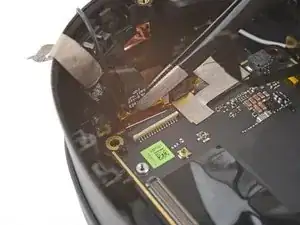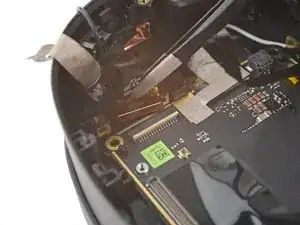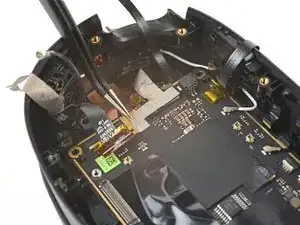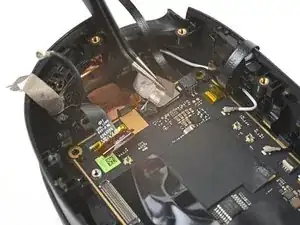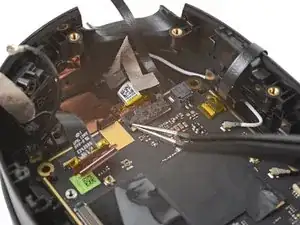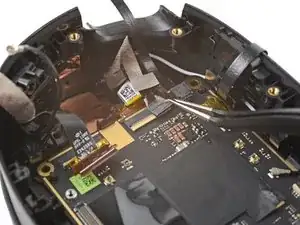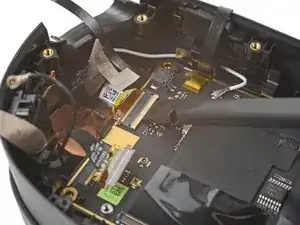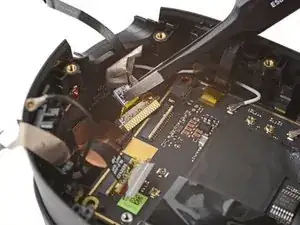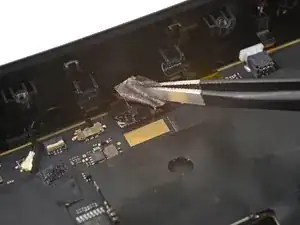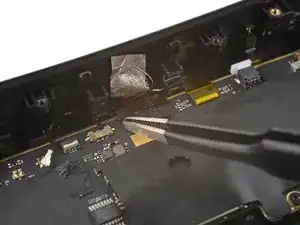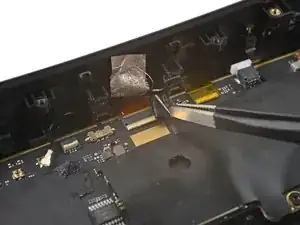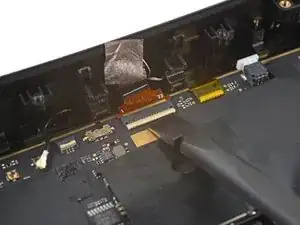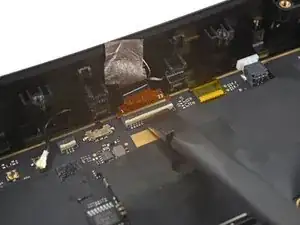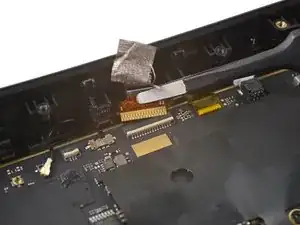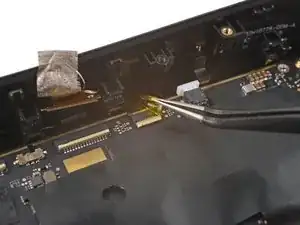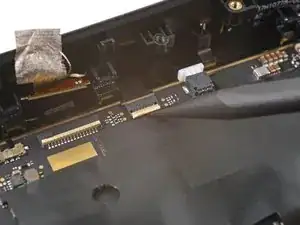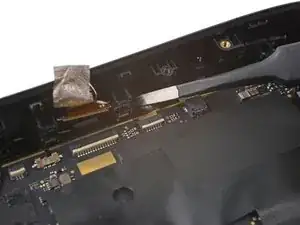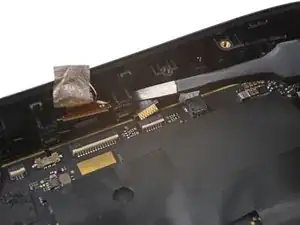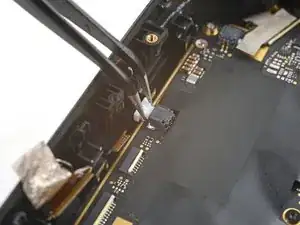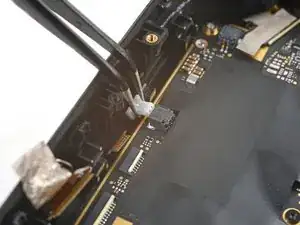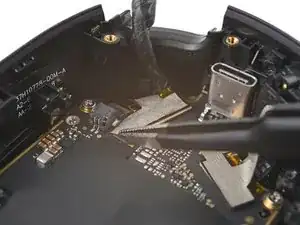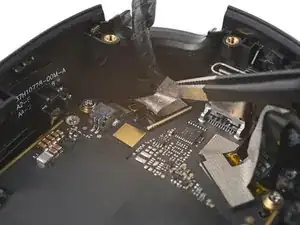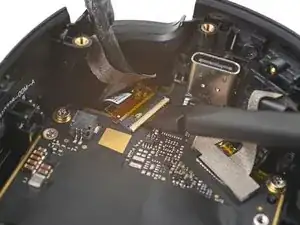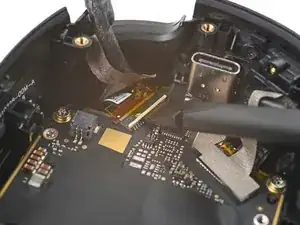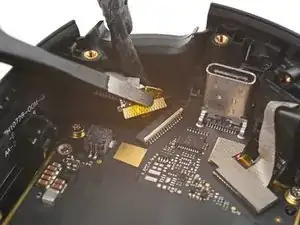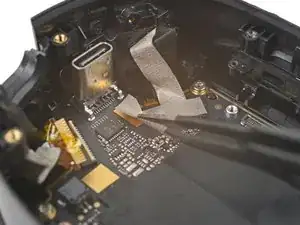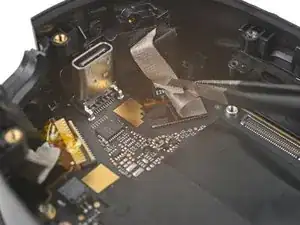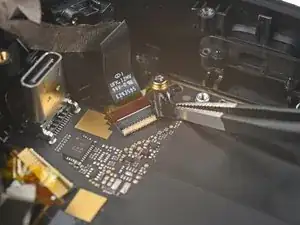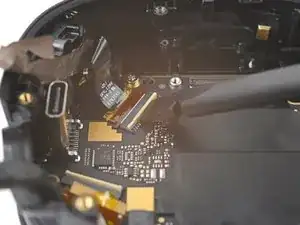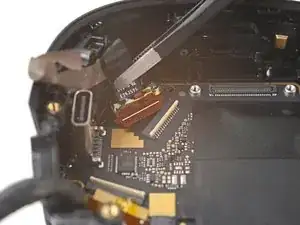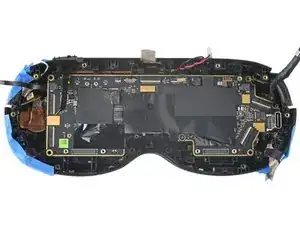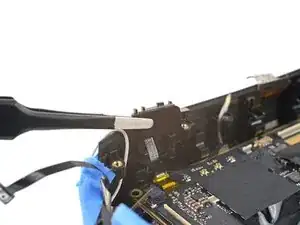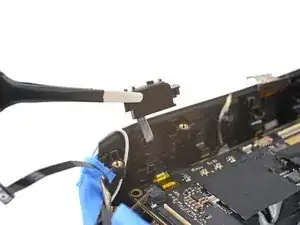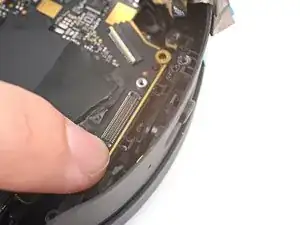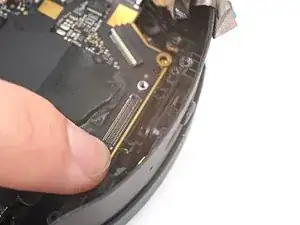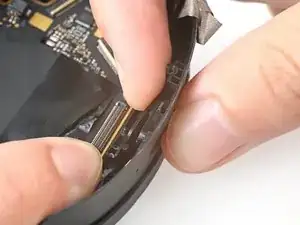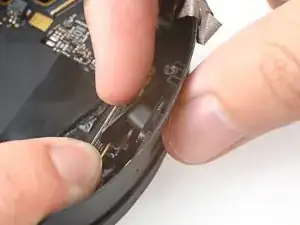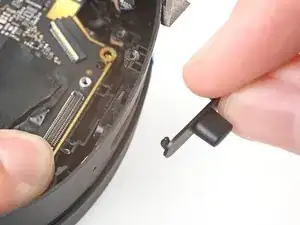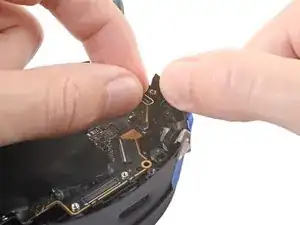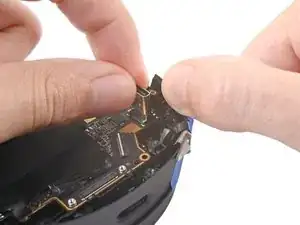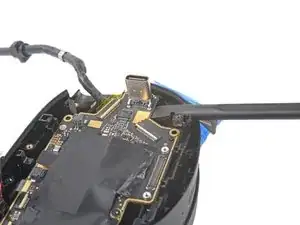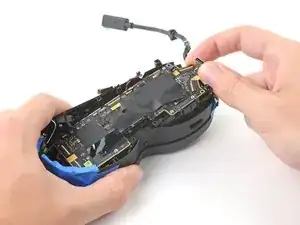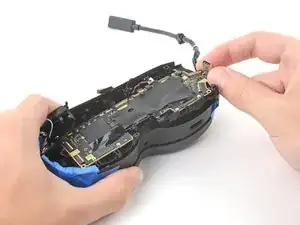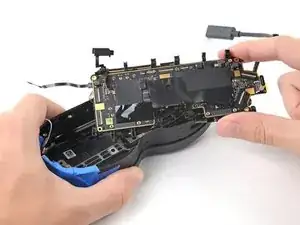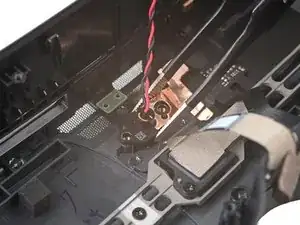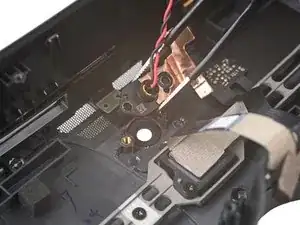Introduction
Use this guide to replace the depth sensor in your HTC Vive XR Elite.
Tools
Parts
-
-
Press the release button on the right battery cradle temple slot.
-
Pull the battery cradle away from the right temple slot to disconnect it.
-
-
-
Use a T5 Torx screwdriver to remove the six 4.9 mm‑long screws securing the two right temple halves.
-
Use a T5 Torx screwdriver to remove the two 3.5 mm‑long screws securing the right hinge cover.
-
-
-
Insert the flat end of a spudger in the gap between the right outer and inner hinge covers.
-
Slide the spudger along the gap to separate the clips securing the outer hinge cover.
-
Remove the outer hinge cover.
-
-
-
Insert the flat end of a spudger in the gap between the outer and inner temple.
-
Slide the spudger along the gap to separate the clips securing the outer temple.
-
-
-
Rotate the outer temple towards you to access the speaker.
-
Slide the flat end of a spudger under the speaker to separate its adhesive.
-
-
-
Use a T5 Torx screwdriver to remove the two screws securing the inner hinge cover:
-
One 3.1 mm‑long screw
-
One 4.9 mm‑long screw
-
-
-
Rotate the inner hinge cover off its groove in the frame.
-
Thread the inner hinge cover off of the USB-C and speaker cables and remove it.
-
-
-
Use a T5 Torx screwdriver to remove the six 4.9 mm‑long screws securing the two left temple halves.
-
Use a T5 Torx screwdriver to remove the two 3.5 mm‑long screws securing the left hinge cover.
-
-
-
Insert the flat end of a spudger in the gap between the left outer and inner hinge covers.
-
Slide the spudger along the gap to separate the clips securing the outer hinge cover.
-
Remove the outer hinge cover.
-
-
-
Insert the flat end of a spudger in the gap between the outer and inner temple.
-
Slide the spudger along the gap to separate the plastic clips securing the outer temple.
-
-
-
Slide the flat end of a spudger under the speaker to separate its adhesive.
-
Let the speaker rest next to the headset before continuing.
-
-
-
Use a T5 Torx screwdriver to remove the two screws securing the inner hinge cover:
-
One 3.5 mm‑long screw
-
One 4.9 mm‑long screw
-
-
-
Rotate the inner hinge cover off its groove in the frame.
-
Let the cover hang off its volume button cable for now.
-
-
-
Use a T5 Torx screwdriver to remove the 12 screws securing the face plate:
-
Six 3.5 mm‑long screws
-
Four 4.9 mm‑long screws
-
Two 6.5 mm‑long screws
-
There are two magnets at the top corners of the face plate. As you remove nearby screws, they might stick to them.
-
-
-
Insert the flat end of the spudger in the gap between the frame and the bottom right corner of the face cover.
-
Pry up with the spudger to release the clips securing the face cover.
-
-
-
Lift the face cover and rotate it over the top of the frame.
-
Lay the face cover face up before continuing.
-
-
-
Use a T5 Torx screwdriver to remove the two 3.3 mm‑long screws securing the proximity sensor cable.
-
-
-
Use a T5 Torx screwdriver to remove the four screws securing the lens assembly:
-
Three 4.9 mm‑long screws
-
One 3.3 mm‑long screw
-
-
-
Use tweezers to pull the left screw bracket of its post in the frame.
-
Repeat this process for the right bracket.
-
-
-
Lift the bottom of the lens assembly up to separate the bottom rails from their slots in the frame.
-
-
-
Pull the lens assembly upwards to separate the top rails from their slots in the frame.
-
Rotate the lens assembly towards the top of the frame so it sits upright with its cable connectors exposed.
-
-
-
Use a T5 Torx screwdriver to remove the four 3.4 mm‑long screws securing the lens assembly cables.
-
-
-
Use the flat end of a spudger to pry up and disconnect the lens assembly cable connector.
-
Repeat this procedure for the other connector.
-
-
-
In order for the lens assembly to rest in the frame properly, it needs to align with a peg in the IPD (interpupillary distance) slider.
-
-
-
Slide the top left rail into its slot.
-
Align the other rails.
-
Press the lens assembly into place, making sure to realign the center peg.
-
-
-
Use the point of a spudger to lift up the locking flap on the proximity sensor ZIF connector.
-
-
-
Lift the motion sensor off its pegs in the frame.
-
Flip over the motion sensor and lay it on the frame before continuing.
-
-
-
Use tweezers to pull the motion sensor cable connector out of its slot.
-
Remove the motion sensor.
-
-
-
Insert one arm of your tweezers between the volume button cable and the hinge cover.
-
Pry away from the hinge cover to separate the adhesive.
-
-
-
Use tweezers to guide the bottom left antenna cable out of its slot in the motion sensor bracket.
-
-
-
Use a T5 Torx screwdriver to remove the two 4.9 mm‑long screws securing the motion sensor bracket.
-
-
-
Use tweezers to peel back the gray conductive tape covering the left side‑camera ZIF connector.
-
-
-
Use flat end of a spudger to lift up the locking flap on the left side‑camera ZIF connector.
-
-
-
Use tweezers to pull the left side‑camera cable connector out of its slot in the motherboard.
-
-
-
Use tweezers to peel back the gray conductive tape covering the left tracking camera ZIF connector.
-
-
-
Use tweezers to pull the left tracking camera cable connector out of its slot in the motherboard.
-
-
-
Use one arm of your tweezers to pry up and disconnect the top left white antenna cable.
-
Repeat for the top right black antenna cable.
-
-
-
Use tweezers to peel back the gray conductive tape covering the pass-through camera ZIF connector.
-
-
-
Use tweezers to pull the pass-through camera cable connector out of its slot in the motherboard.
-
-
-
Use tweezers to peel back the gray conductive tape covering the right tracking camera ZIF connector.
-
-
-
Use tweezers to peel back the gray conductive tape covering the right side‑camera ZIF connector.
-
-
-
Use a T5 Torx screwdriver to remove the two 4.9 mm‑long screws securing the motherboard frame.
-
-
-
Use tape with light adhesive, such as painter's tape, to keep the left and right side cables away from the motherboard.
-
The cables near the top edge need slack for the motherboard to rest properly in the frame. Avoid taping them tightly—or avoid taping them altogether.
-
-
-
Press down the bottom right corner of the motherboard so its edge rests under the IPD slider.
-
-
-
While pressing down on the motherboard, push the IPD slider out of its slot in the frame.
-
Remove the IPD slider.
-
-
-
Grip the USB-C port with one hand and the right side of the frame with the other.
-
Pull the frame outward while lifting the motherboard assembly until it clears its slot next to the right side‑camera.
-
Use a spudger to pry up the motherboard assembly until its right side completely clears the frame.
-
-
-
Pull the right side of the motherboard assembly toward the bottom edge of the device to separate it from the frame.
-
Remove the motherboard assembly.
-
-
-
Use tweezers to pull the depth sensor off of its two alignment pegs in the frame.
-
Remove the depth sensor.
-
Compare your new replacement part to the original part—you may need to transfer remaining components or remove adhesive backings from the new part before installing.
To reassemble your device, follow these instructions in reverse order.
Take your e-waste to an R2 or e-Stewards certified recycler.
Repair didn’t go as planned? Try some basic troubleshooting, or ask our Answers Community for help.


